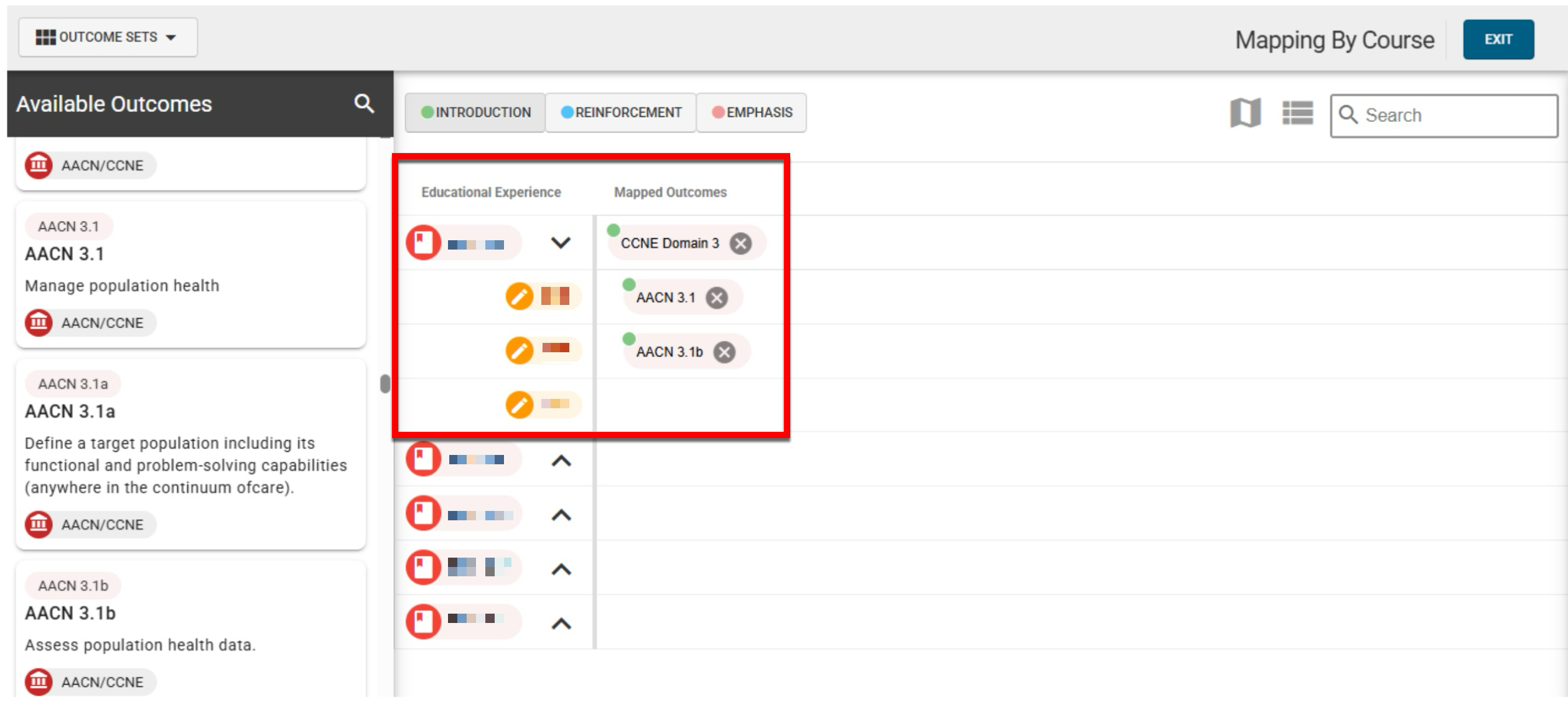|
Purpose: This article assists readers with the decision-making process and steps for setting up a program that is professionally accredited. |
|
|
Use Case |
Roles |
|
What is the best process for setting up curriculum mapping to provide the required data to show compliance with accreditor standards? |
|
Process Steps
-
Review the accreditor standards/competencies/outcomes and consider what is required for reporting and compliance.
-
Configure/add the accreditor standards/competencies/outcomes to the Assessment Management platform as either outcome sets or Program Learning Outcomes (PLOs).
-
Relate the accreditor standards/competencies/outcomes to the program and create relationships.
-
Perform curriculum mapping to either map by course or map by outcome.
Knowledge Base Resources
Considerations
-
Review Getting Started: Curriculum Mapping for an in-depth look at the curriculum mapping process.
-
Outcome sets facilitate reporting. When building programs and designing curriculum maps, think about how the data needs to be used and use that to inform program outcome set design, inclusion, and relationships.
-
The curriculum map drives outcomes assessment via assignment linking. How outcomes are mapped to courses or course learning outcomes determines what is available to be linked to assignments in the LMS or via the Assignment Linking Manager.
Downstream Impacts
The curriculum map is what drives outcomes assessment by utilizing assignment linking generally performed by faculty and Program Coordinators. Because of this, how outcomes are mapped (by course vs. by outcome) can have downstream impacts to faculty and Program Coordinators
During curriculum mapping, if an outcome is mapped directly to a course (not a course learning outcome CLO), the outcome being mapped will display to faculty or Program Coordinators as an option to be linked to an assignment. Learn more about mapping to course.
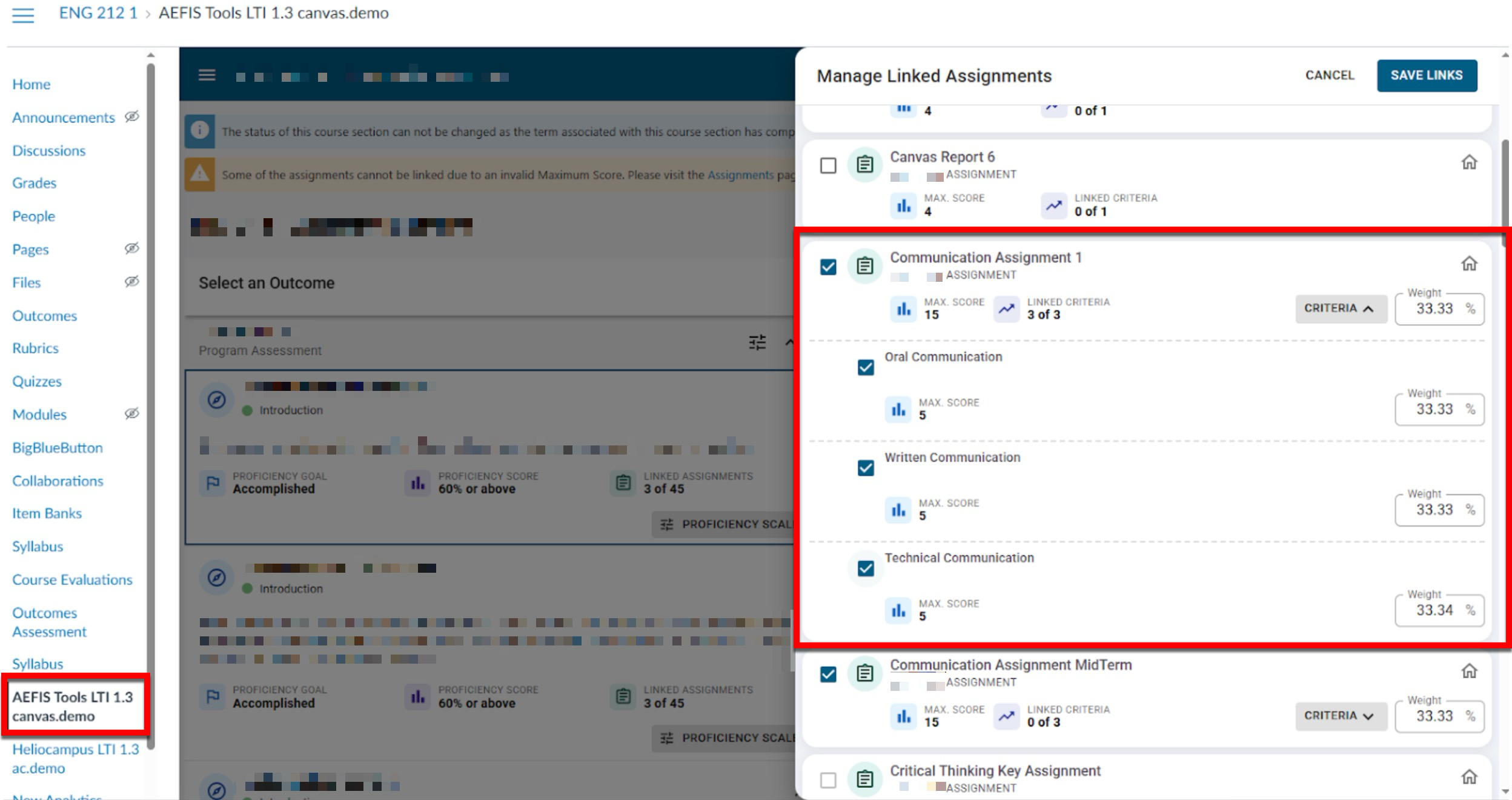
Alternatively, when Course Learning Outcomes (CLOs) have been added to the platform and an outcome (from an outcome set or a program learning outcome) is mapped to a CLO during curriculum mapping, then that CLO will display to faculty or Program Coordinators for assignment linking. Learn more about mapping by outcome.
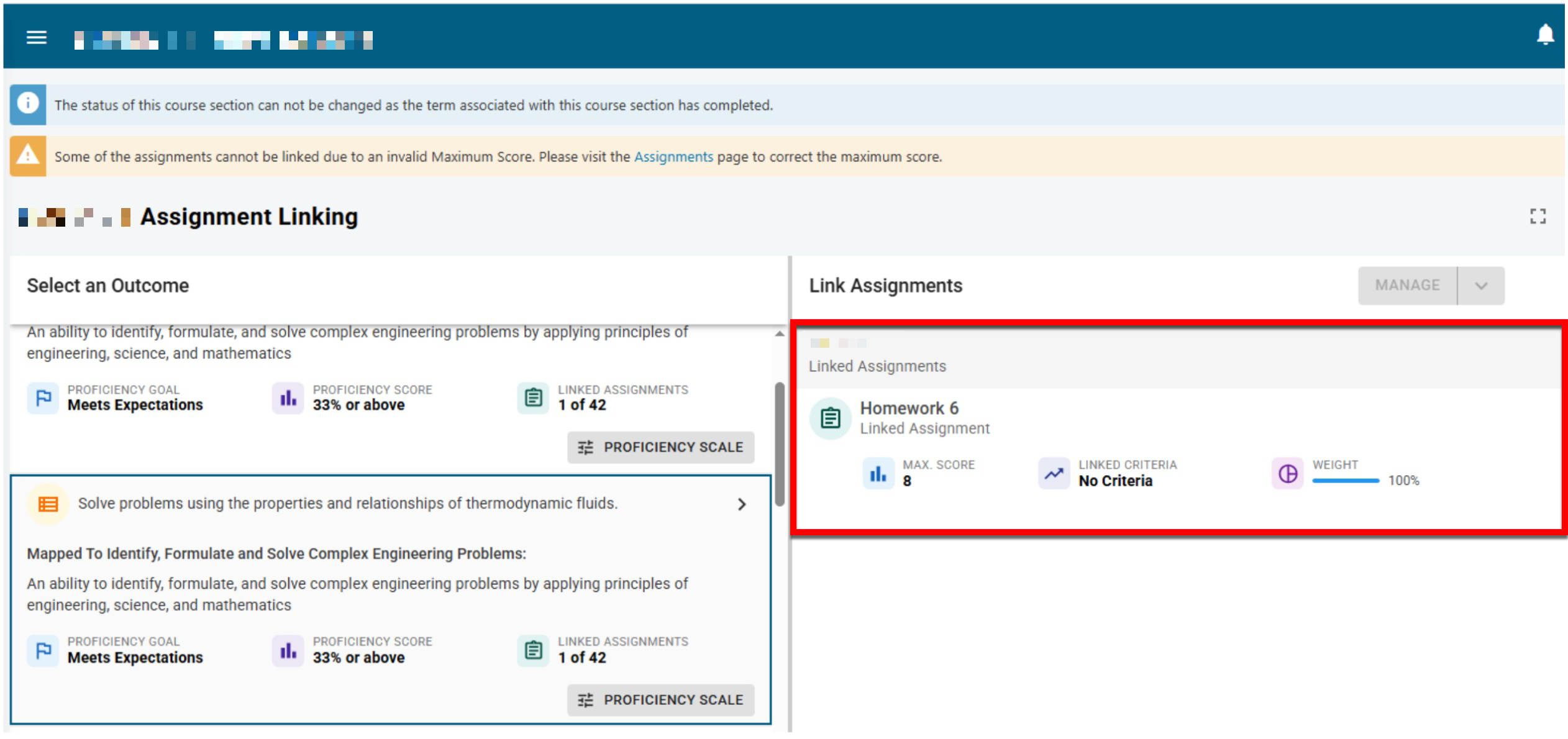
Example
![]()
Review the accreditor standards/competencies/outcomes and consider what is required for reporting and compliance. The AACN Essentials for example, includes three main competencies/outcomes:
-
Competencies and sub-competencies for entry-level professional nursing education and advanced-level nursing education (aligned to each domain; example)
In the example of AACN Essentials, to easily report on domains independent of concepts, or concepts independent of competencies, it makes the most sense to configure each domain/concept/competency as its own unique outcome set. Here is an example of assessment data when the CCNE Domain 2 is configured as its own outcome set. Learn more about assessment data:
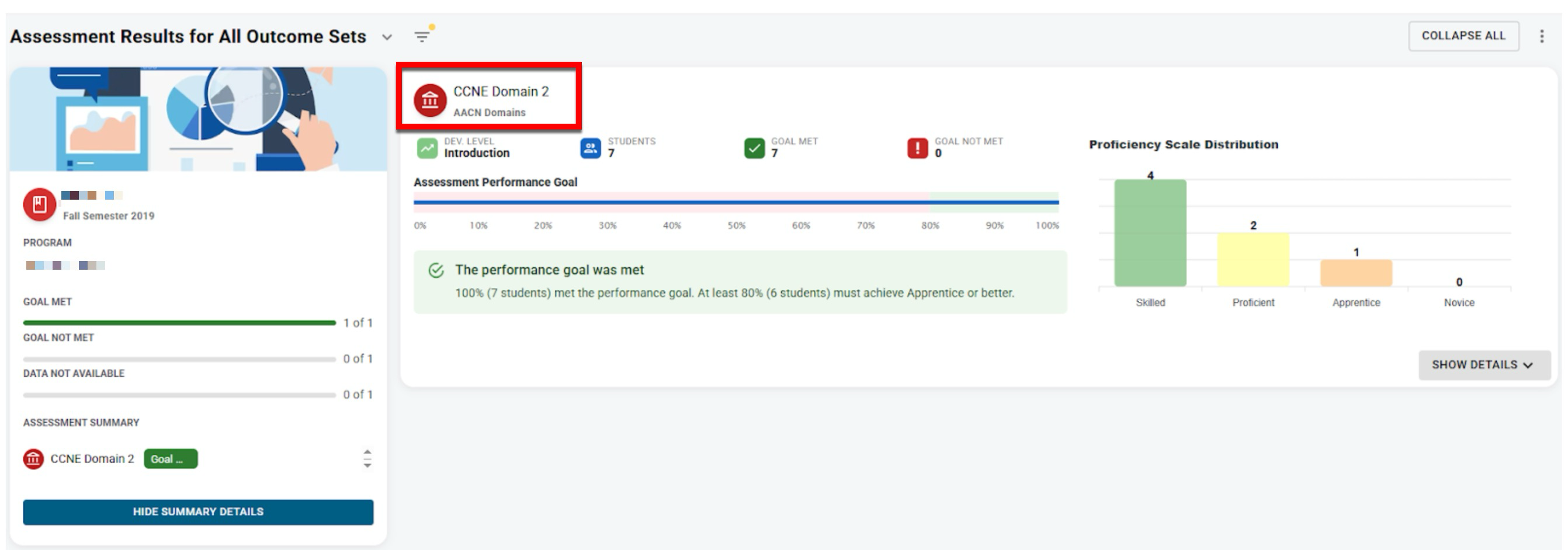
Here are examples of reporting capabilities based on each domain/concept/competency configured as its own unique outcome set:
Direct Assessment Graphs
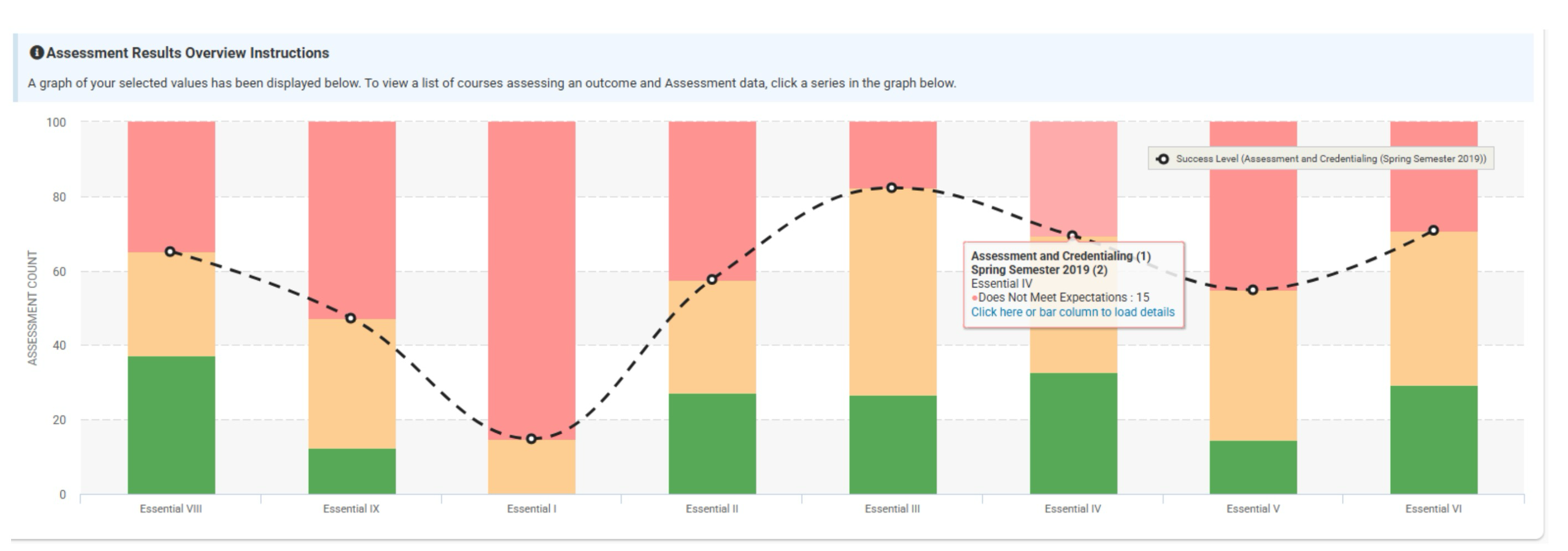
Outcome Assessment Summary Report
Program/Course Assessment Analysis. Learn more.

Once outcome sets are in the platform, it’s then time to associated them to a program - learn more. At this point, any program outcomes will also need to be associated via the program’s Student Outcomes page - learn more.
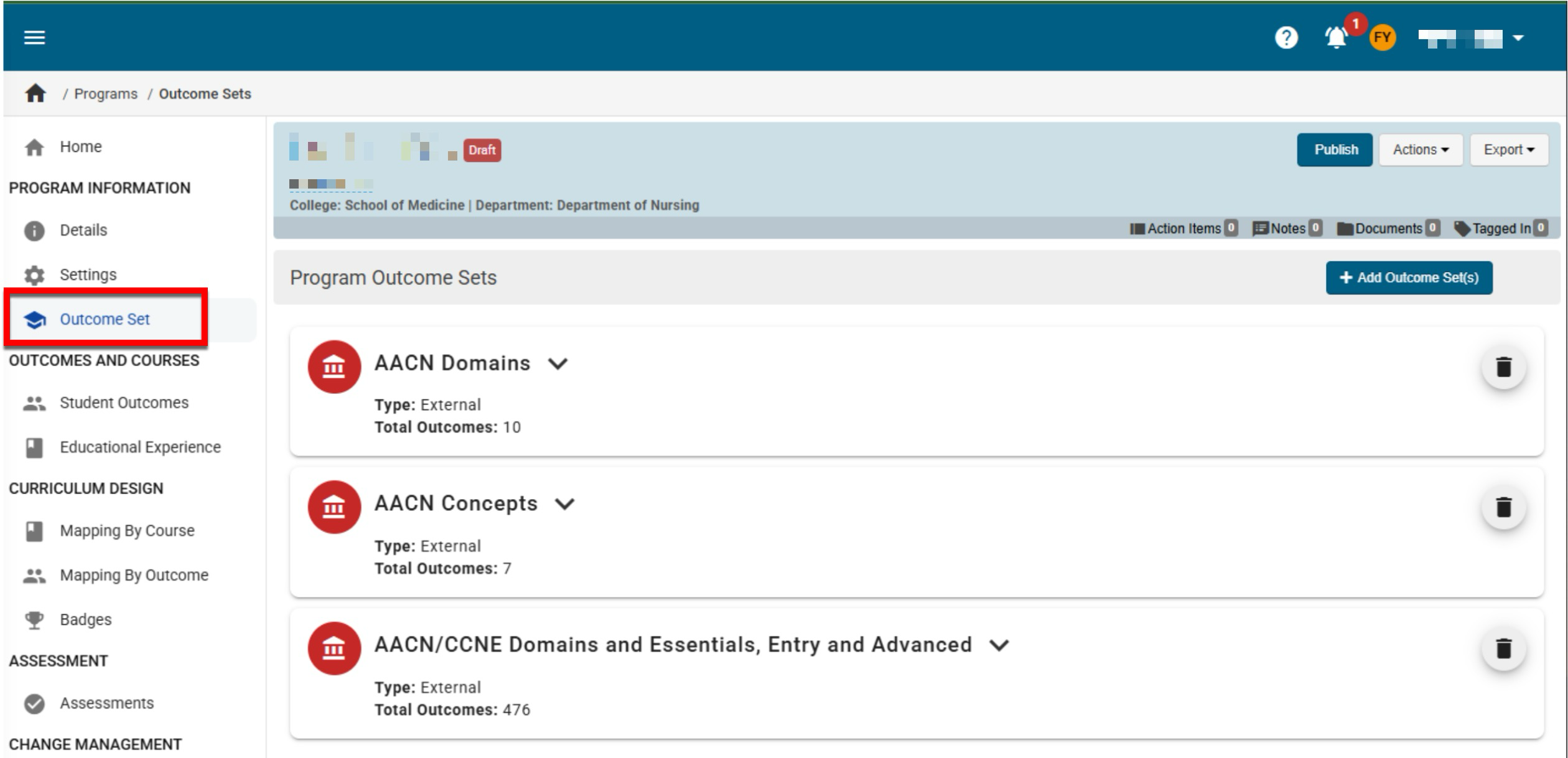
After outcomes sets and student outcomes have been associated to a program, any outcome(s) from any outcome set can be related to one or more PLOs to create relationships. Learn more.
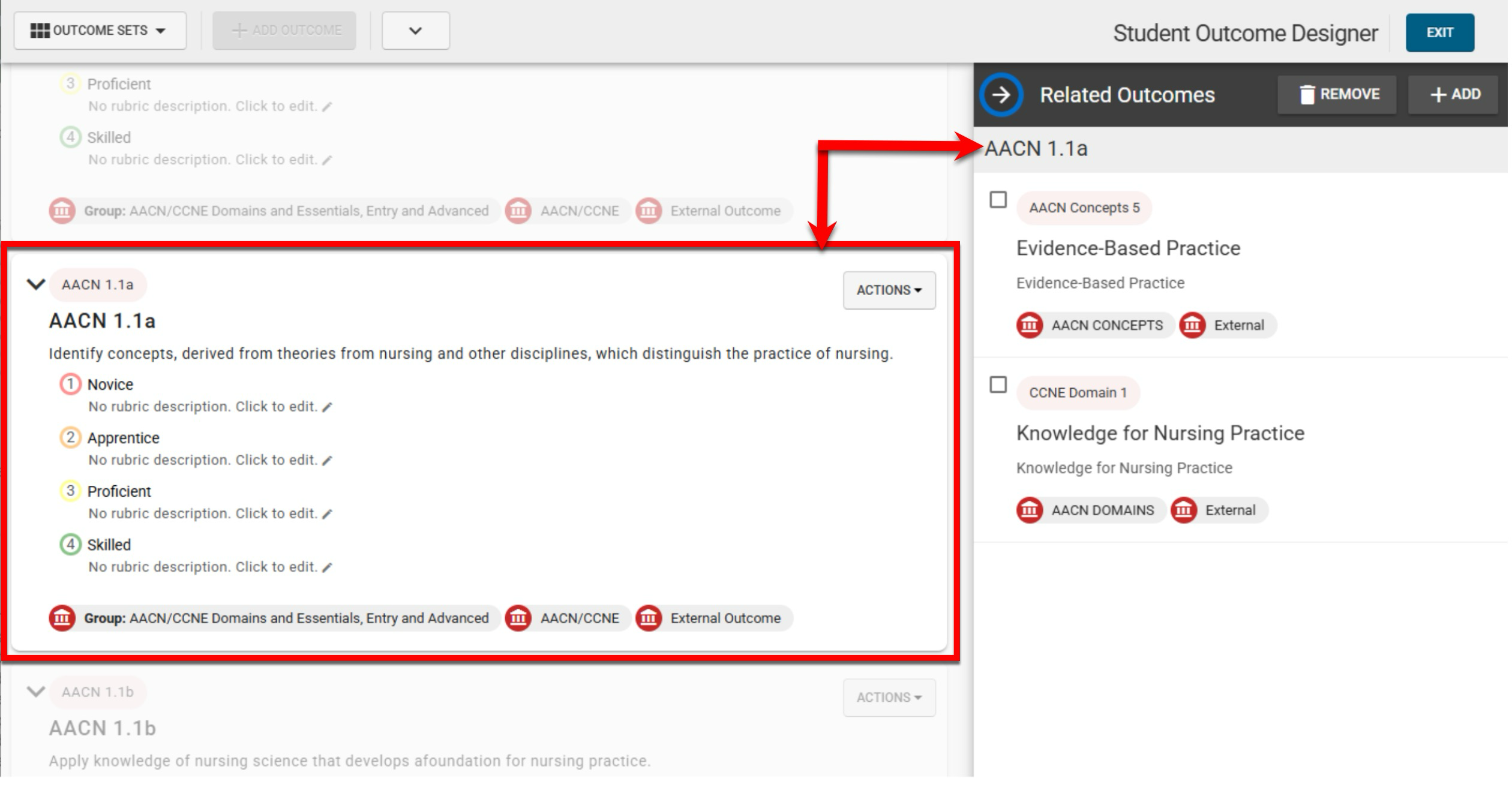
In the example of AACN Essentials, this can taken a step further to consider the competencies and sub-competencies within each domain.
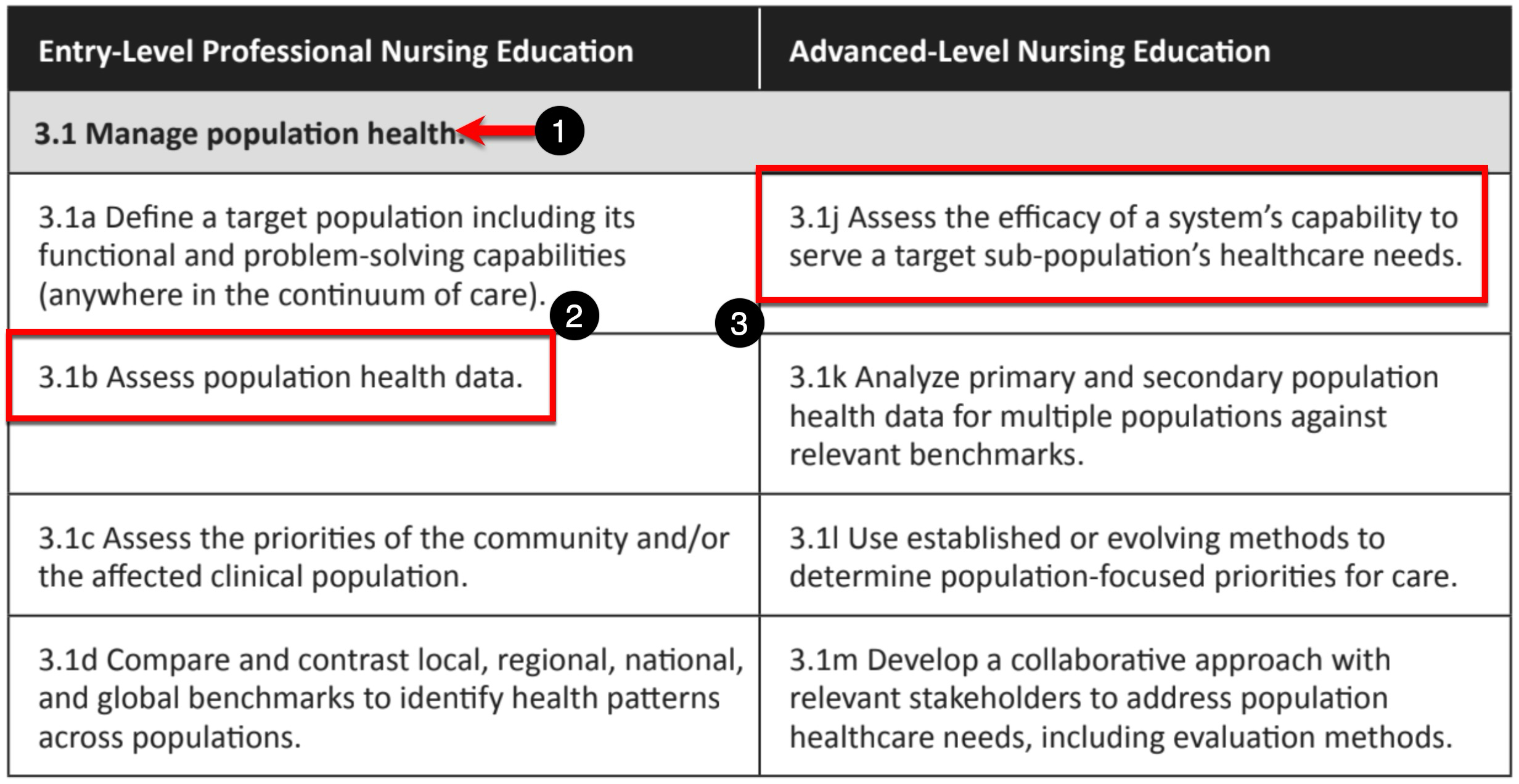
To map and report at the competency level (example: 3.1 Manage Population Health) (1), the an outcome set should be created to include only competencies. Alternately, to map and report at the competency (example: 3.1 Manage population health) (1) and sub-competency (example: 3.1b Assess population health data) (2) levels, then one outcome set should include both competencies and sub-competencies, and both competencies and sub-competencies should be related to PLOs and/or mapped.
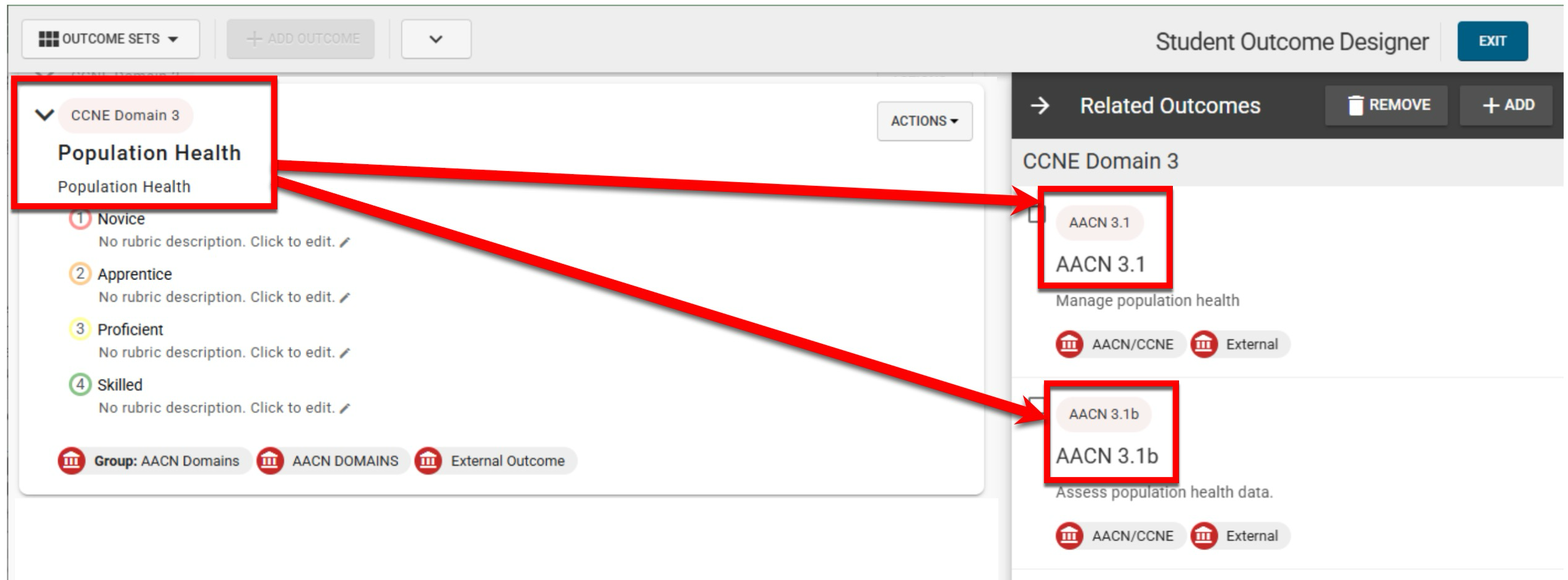
Additionally, to report on entry-level vs. advanced-level sub-competencies, consider creating those as two separate outcome sets - one set for the entry-level sub-competency (example: 3.1b) (2) and an additional set for the advanced-level sub competencies (example: 3.1j) (3) so that these can be tracked and reported on separately.
After all outcomes have been added to the platform as either a part of an outcome set or via the program outcome page and any desired outcome relationships have been captured between outcomes within the various outcome sets and established program outcomes, then it’s time to build the curriculum map. Curriculum Mapping can be done by course or by outcome; either can be used interchangeably and mappings performed with either method will be mirrored; e.g., if mappings are performed by course, then the outcomes mapping will reflect the same mappings displayed by the course. Learn more - mapping by course or mapping by outcome. Shown below is the Mapping by Course page.
